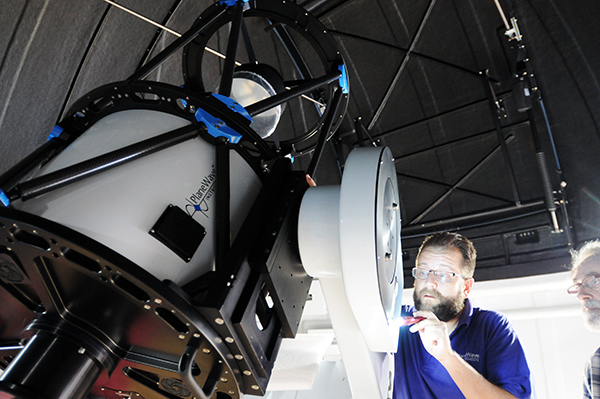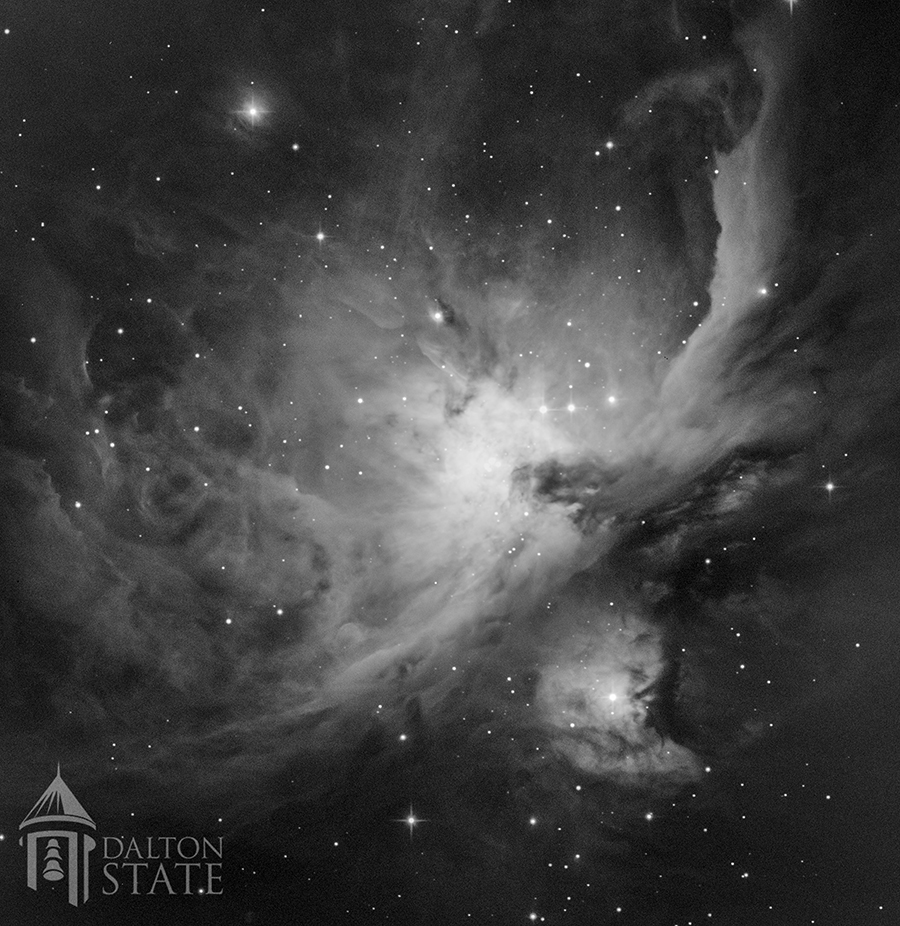Approximately 1,300 light years away from earth is a bright star-forming region. The cloud of gas is a hub of activity that astronomers study to learn more about how stars form.
Found in the Orion constellation and visible to the naked eye, the Orion Nebula is one of the brightest nebulas in the night sky.
Dalton State has begun collecting images of this nebula through the 24-inch reflecting telescope recently installed in the College’s observatory.
“The M42, or Orion Nebula, is 1,344 light years from us,” said Dr. Samantha Blair, assistant professor of physics and astronomy. “To compare, the nearest star besides the sun is Proxima Centauri, 4.2 light years from us. This first image was a 10-second exposure. It absolutely blew my mind. I cannot wait to start imaging more celestial objects for the College and our students.”

As a professional radio astronomer, Blair is working with optical astronomers and astrophotographer Matt Harbison to learn how to use the new telescope and software to its full potential.
With the observatory, the astronomy classes at Dalton State will become lab courses and students can use the images for undergraduate research of their own, said Dr. Randall Griffus, dean of the School of Science, Technology, Mathematics. Griffus hopes to see that change in the College’s curriculum by fall semester.
“We’re so thankful for the $300,000 grant from the Mashburn Charitable Trust that allowed us to build this observatory for our students and the community,” Griffus said. “We’re excited about the future of our astronomy program, and we’re glad to provide this asset to the community.”
Dalton State already hosted several public viewing events each year, using the College’s growing telescope collection. But the observatory will take those events to a new level, allowing the public to see other galaxies, nebulas, supernovas, asteroids, and possibly extra-solar planets.
“The observatory will provide unique access for Dalton State students, local school systems, and the community of Dalton to the beauty, intrigue, and majesty of the cosmos,” Blair said. “It is an amazing resource for North Georgia. Not only will the facility be used for student labs and research, it will be available for school events, public viewing nights, tours, and demonstrations.”
Dalton State College partnered with Whitfield County Public Schools to construct the observatory, which is located on property at Beaverdale Elementary School off Ga. Highway 2 in northern Whitfield County. The location was ideal because there isn’t much light pollution in the area, making it easier to capture images of the deep space objects.





